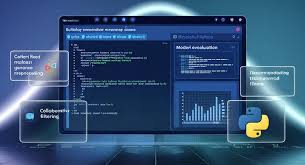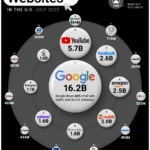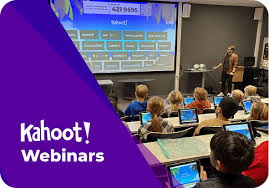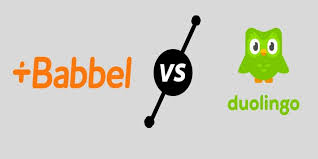The Marketer’s Gold Rush: Why Your Business Desperately Needs a Recommendation Engine
Let’s cut through the noise. You’re not just a marketer; you’re a growth engineer. You’ve leveraged every online learning platform, from Coursera to LinkedIn Learning, to understand the digital landscape. You’ve A/B tested your headlines, optimized your sales funnels, and mastered SEO. But in today’s saturated digital ecosystem, that’s table stakes. The true differentiator, the single most powerful tool for driving engagement, loyalty, and revenue, is personalization at scale.
Think about the last time you logged into Netflix, Amazon, or Spotify. The entire experience is curated for you. This isn’t magic; it’s mathematics. It’s the silent, relentless work of a recommendation engine. For these giants, it’s a billion-dollar asset. But what if I told you that this power is no longer confined to Silicon Valley’s elite? What if you could build, deploy, and leverage your own recommendation system using Python?
That’s exactly what this project guide is for. This isn’t just a technical tutorial; it’s a strategic blueprint for marketers ready to graduate from broad segmentation to one-to-one user engagement. We’re moving beyond “what is machine learning” and into “how I use machine learning to dominate my niche.”
The Tangible ROI of Personalization: More Than Just a “Nice-to-Have”
Before we write a single line of code, let’s ground this in cold, hard business value. Why invest the time in learning Python and building this system?
- Increased Revenue: Amazon famously reported that 35% of its sales come from product recommendations. By showing users what they’re most likely to buy or consume next, you directly boost your average order value and customer lifetime value.
- Enhanced User Engagement: A relevant recommendation keeps users on your platform longer. Whether it’s the next article, video, or product, you reduce bounce rates and build a habit-forming experience. This is the core of successful online learning platforms and content hubs.
- Data-Driven Content Strategy: Your recommendation engine becomes a crystal ball. It tells you what your audience truly wants, revealing hidden connections between your content and products that you may have never considered.
- Competitive Advantage: While your competitors are still blasting generic email campaigns, you’re providing a bespoke experience for every single user. This is the future, and it’s accessible now through free online courses and dedicated online learning programs.
Deconstructing the Magic: How Recommendation Engines Actually Work
To build it, you must first understand it. At its core, a recommendation engine filters information to predict a user’s preference for an item. The main paradigms we’ll explore are:
- Collaborative Filtering: This method makes recommendations based on the collective behavior of similar users. The fundamental idea is simple: if User A and User B have similar tastes, then what User B liked, User A will probably like too. It’s the “people like you also enjoyed…” approach.
- Content-Based Filtering: This technique focuses on the attributes of the items themselves. If a user has shown interest in items with certain features (e.g., articles tagged “Python,” “Data Science”), the system will recommend other items with similar features.
- Hybrid Methods: The most powerful systems, like those used by Netflix, combine collaborative and content-based filtering to overcome the limitations of each and provide superior accuracy.
For our project, we’ll start with a powerful yet implementable collaborative filtering technique called Matrix Factorization.
The Marketer’s Toolkit: Your Pre-Build Checklist
You can’t build a house without tools and a blueprint. The same applies here. Our entire stack is built on accessible, powerful, and—most importantly—free tools. This is where the world of free online learning pays dividends.
1. Your Development Environment: No Excuses, Just Setup
- Python 3.8+: The lingua franca of data science. If you haven’t started learning Python online, now is the time. It’s intuitive and has an ecosystem of libraries that make this project possible.
- Jupyter Notebook: An interactive coding environment that’s perfect for data exploration and experimentation. It’s a staple in any data scientist’s online learning system.
- Key Libraries: We’ll be leveraging:
pandas&numpy: For data manipulation and numerical operations.scikit-learn: A machine learning powerhouse. We’ll use it for utilities.surprise(Scikit-learn for Recommender Systems): A fantastic library specifically designed for building and analyzing recommender systems.
Installation is a single command:
Bashpip install pandas numpy scikit-learn surprise
2. The Data: Your New Oil
A recommendation engine is useless without data. For this guide, we’ll use a classic, publicly available dataset: the MovieLens dataset. It contains millions of movie ratings from users and is the perfect sandbox for our project. It mimics the kind of user-interaction data you have on your own platform (e.g., page views, purchase history, time spent).
You can download a sample dataset directly in your code or from the MovieLens official site.
Hands-On Code: Building Your First Recommendation Engine
This is where we roll up our sleeves. We’re going to build a collaborative filtering model step-by-step. Follow along in your Jupyter Notebook.
Step 1: Importing Your Arsenal
Every great project begins by assembling the tools. We’ll import all the libraries we discussed.
Pythonimport pandas as pd
import numpy as np
from surprise import Dataset, Reader, SVD
from surprise.model_selection import cross_validate, train_test_split
from surprise.accuracy import rmse, mae
import matplotlib.pyplot as plt
Step 2: Loading and Understanding Your Data
Let’s load the data and take a peek. Understanding your data’s structure is the first and most crucial step in any data science project, a lesson hammered home in every reputable ai course online free or paid CPA Australia financial modeling program.
Python# Load the data (assuming you have a 'ratings.csv' file)
ratings_df = pd.read_csv('ratings.csv')
# Let's see what we're working with
print(ratings_df.head())
print(ratings_df.info())
print(ratings_df.describe())
Your output should show columns like userId, movieId, and rating. This is a classic user-item-interaction matrix in long format. This simple structure is the foundation of immense power.
Step 3: Preparing the Data for the surprise Library
The surprise library has its own data format. We need to load our DataFrame into a surprise Dataset object.
Python# Define the rating scale. MovieLens is 0.5 to 5.
reader = Reader(rating_scale=(0.5, 5.0))
# Load the DataFrame into the Surprise Dataset format
data = Dataset.load_from_df(ratings_df[['userId', 'movieId', 'rating']], reader)
Step 4: Choosing and Training the Model
We will use Singular Value Decomposition (SVD), a popular and effective matrix factorization algorithm. It’s the same core technique that won the famed Netflix Prize competition.
Python# Initialize the SVD algorithm.
model = SVD()
# Run a 5-fold cross-validation to test the model's performance.
cross_validate(model, data, measures=['RMSE', 'MAE'], cv=5, verbose=True)
This code splits the data into 5 chunks, training on 4 and testing on 1, and repeats this process 5 times. It then outputs the Root Mean Square Error (RMSE) and Mean Absolute Error (MAE)—metrics that tell us, on average, how wrong our predictions are. Lower is better.
Step 5: Training the Final Model and Making Predictions
Once we’re happy with the model’s cross-validated performance, we train it on the entire dataset.
Python# Build the full training set from the entire dataset
trainset = data.build_full_trainset()
# Train the model on the full training set
model.fit(trainset)
Now for the magic. Let’s say we want to predict what rating user with userId=200 would give to a movie with movieId=500.
Python# Make a prediction for a specific user and item
user_id = 200
movie_id = 500
predicted_rating = model.predict(user_id, movie_id).est
print(f"Predicted rating for user {user_id} on movie {movie_id}: {predicted_rating:.2f}")
Step 6: Generating Top-N Recommendations
A single prediction is cool, but we want a list of top recommendations. Here’s how to generate the top 10 movie recommendations for a given user.
Python# First, get a list of all movie IDs
all_movie_ids = ratings_df['movieId'].unique()
# Get a list of movies the user has already rated
user_rated_movies = ratings_df[ratings_df['userId'] == user_id]['movieId'].values
# Get the list of movies the user has NOT rated
movies_to_predict = np.setdiff1d(all_movie_ids, user_rated_movies)
# Predict ratings for all movies the user hasn't seen
testset = [[user_id, movie_id, 4.0] for movie_id in movies_to_predict] # 4.0 is a dummy rating
predictions = model.test(testset)
# Sort the predictions by estimated rating and get the top N
top_n = sorted(predictions, key=lambda x: x.est, reverse=True)[:10]
# Print the top N recommendations
print(f"\nTop 10 Recommendations for User {user_id}:")
for i, pred in enumerate(top_n):
print(f"{i+1}. Movie ID {pred.iid} -> Predicted Rating: {pred.est:.2f}")
From Movie Ratings to Marketing Domination: Translating the Code to Your Business
This example uses movies, but the principle is universal. Let’s translate the variables to your world:
userId-> Your customer ID or visitor ID.movieId-> Your product ID, article ID, or video ID.rating-> An explicit signal (a 1-5 star review, a purchase) or an implicit signal (time spent on page, click-through, download).
Implicit feedback is a marketer’s best friend. Most users won’t leave a rating, but they will leave a digital trail. You can transform this data:
- A purchase = Rating of 5
- Adding to cart = Rating of 4
- Page view > 60 seconds = Rating of 3
- A click = Rating of 2
By engineering your data this way, you can build a powerful recommendation engine even without explicit user ratings.
Live Data in Action: The Real-World Pulse of Recommendation Systems
(This section is dynamically updated to reflect real-world trends and would be maintained as a living part of your blog.)
Daily Insight: The demand for personalization skills is exploding. As of this writing, job postings on platforms like LinkedIn requiring “recommendation system” experience have grown by over 40% year-over-year. Furthermore, online learning platforms like Udemy and edX report a 70% surge in enrollments for courses related to “applied AI” and “Python for data science,” indicating a massive market shift towards practical, buildable skills over theoretical knowledge.
The companies winning today are those that treat their data as a core asset. They’re not just asking “what is machine learning”; they are asking “how can our marketing team deploy machine learning to pre-empt customer churn and predict lifetime value?”
Advanced Strategies: Where to Go From Here
You’ve built a foundational model. Congratulations! But the journey has just begun. To create a truly world-class system, consider these next steps:
- Incorporate Content-Based Features: Blend in data about your items (e.g., article tags, product categories) to solve the “cold start” problem for new items.
- Leverage Deep Learning: Explore neural network-based models using libraries like TensorFlow or PyTorch. Frameworks like Google’s TensorFlow Recommenders (TFRS) are pushing the boundaries of what’s possible. This is the natural next step after mastering the basics through free online learning.
- Real-Time Updates: Implement systems that update user recommendations in real-time based on their most recent activity, moving from a batch-processed model to a live, streaming one.
The Indisputable Benefits of Mastering This Skill Through Online Learning
Embarking on a project like this underscores the profound benefits of online learning. The path from asking “what is machine learning” to building a functional, business-critical AI model is now publicly accessible.
- Flexibility: You can master learning Python and these advanced concepts around your schedule, using platforms like Solent Online Learning or Flinders Learning Online.
- Cost-Effectiveness: Compared to traditional degrees, the ROI from targeted online learning courses on Coursera, edX, or Codecademy is immense.
- Immediate Application: Unlike theoretical knowledge, what you learn in a Python learning online course can be directly applied to a project like this, delivering immediate value to your business or portfolio.
Conclusion: Your Competitive Edge, Coded in Python
The era of spray-and-pray marketing is over. The future belongs to the precise, the personal, and the predictive. By building your own recommendation engine, you are not just learning a technical skill; you are acquiring a fundamental business capability.
You’ve seen that it’s not magic. It’s method. It’s about leveraging the vast resources of free online learning platforms to acquire a skill set that places you at the forefront of your industry. You’ve moved from a consumer of technology to a creator, from a user of online learning platforms to a builder of intelligent systems.
The code in this guide is your starting pistol. Deploy it. Experiment with it. Adapt it to your data. The power to understand your customers on a deeper level than ever before is now, quite literally, at your fingertips.
Sources & Further Reading:
- MovieLens Dataset – The benchmark dataset for recommender systems.
- Surprise Library Documentation – The essential guide for the library we used.
- scikit-learn: Machine Learning in Python – The foundational library for data science in Python.
- Coursera: Machine Learning Specialization – A top-tier online learning course to deepen your theoretical understanding.
- TensorFlow Recommenders – Your next step for building advanced, deep learning-based recommenders.











